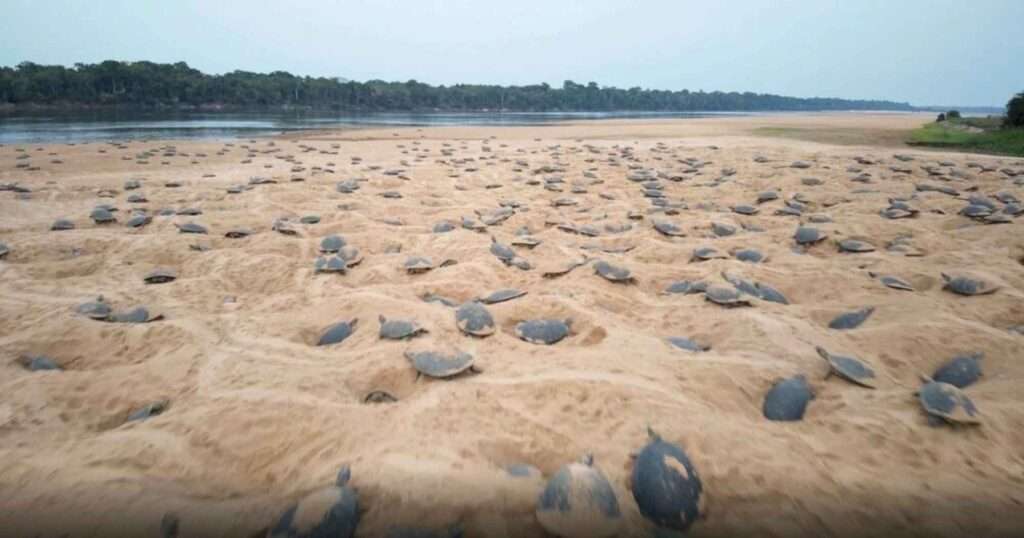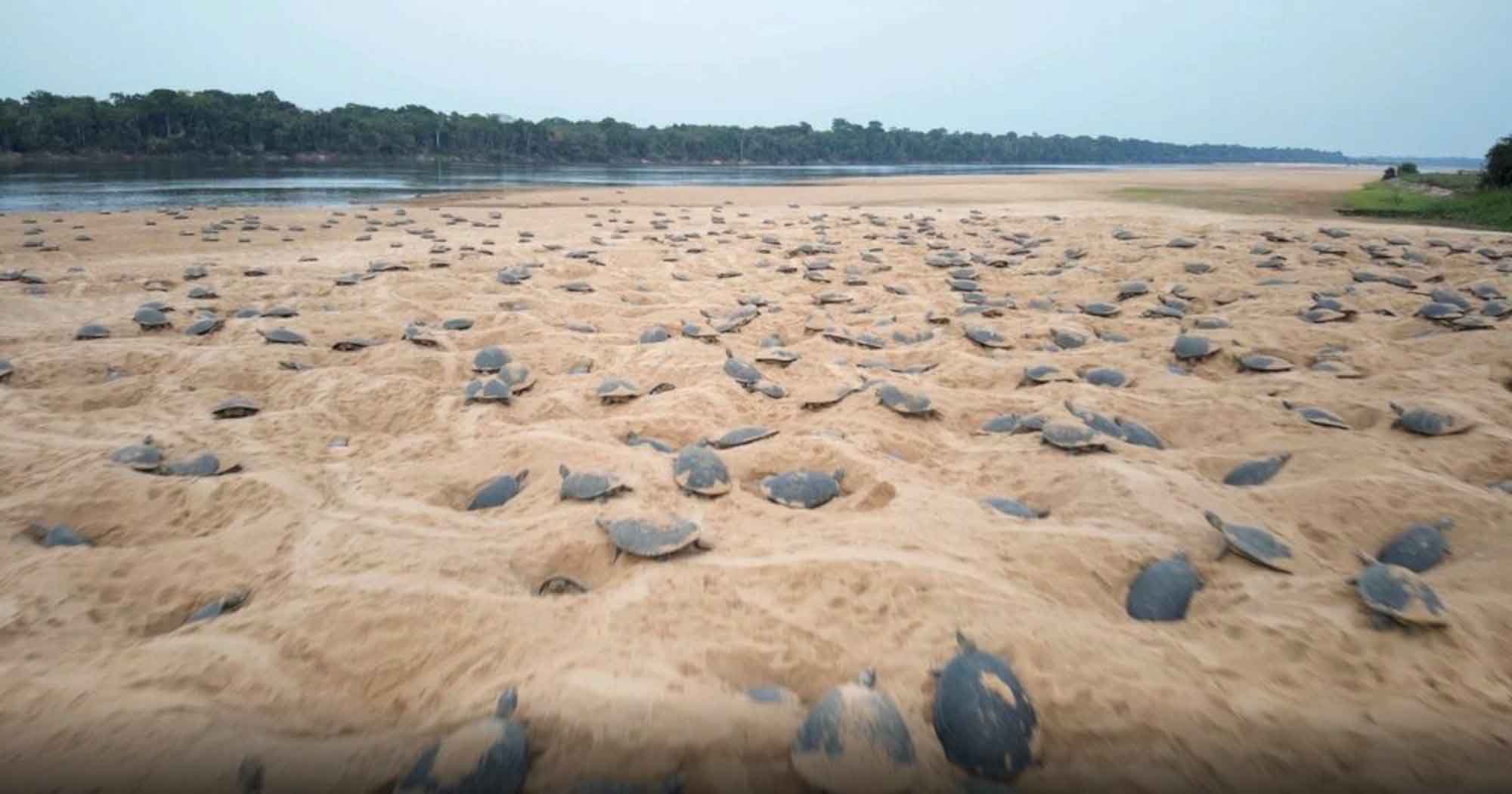This incredible video footage shows hundreds of thousands of baby giant South American river turtles (Podocnemis expansa) recently emerging from nesting beaches along the Guapore/Intenez River along the border of Brazil and Bolivia.
The annual nesting and hatching of Latin America’s largest freshwater turtle species along sandbars in this region of the western Amazon Basin are considered the largest single aggregation of turtles on the planet.
Beginning in late September, an estimated 80,000 adult female turtles gather on these local nesting beaches to dig nests and lay eggs.
The footage, taken by the Wildlife Conservation Society (WCS) conservation partner Ecovale, shows beaches swarming with baby turtles.
As they emerge from the sand, they then congregate along sand banks before eventually dispersing into the river.
The turtles began hatching in mid-December and continued into early January.
The Giant South American river turtle is the largest freshwater turtle in Latin America, reaching three and a half feet (1.07 meters) and 200 pounds (90 kg).
The turtles play an important ecological role by dispersing seeds that eventually help regenerate vegetation along river corridors. In addition, they make a significant contribution of biomass to the food web of the river.
Camila Ferrara, Aquatic Turtle Specialist for the WCS Brazil Programme, said in a statement obtained by Newsflash: “The annual nesting and hatching of the giant South American river turtle is one Earth’s great natural spectacles. It is visually stunning, but also extremely important ecologically to the western Amazon ecosystem.”
WCS is combining the efforts of its country programs in Bolivia and Brazil to develop a coordinated multi-national push to conserve this key population of the great South American river turtle, which used to number in the millions, but the population has been declining due to historical over-harvest for oil, meat, and trade.
WCS conservationists are working to protect the turtle in collaboration with Ecovale, the Versalles community in Bolivia, environmental agencies from both countries, and local people. WCS and partners have begun using drones to count adult turtles.

German Forero-Medina, Scientific Director with WCS Colombia also said in the statement: “Safeguarding this population of giant South American river turtles takes a community approach. WCS proudly works with local partners with a direct stake in ensuring that this species is part of their natural heritage.”
Collaborators are protecting the eggs from poachers, conducting a census of the nesting females, and collecting other data which will help inform a conservation plan for the species, which includes establishing a protected area to permanently safeguard nesting and hatching turtles.
To find out more about the author, editor or agency that supplied this story – please click below.
Story By: Michael Leidig, Sub-Editor: Marija Stojkoska, Agency: Newsflash
The Ananova page is created by and dedicated to professional, independent freelance journalists. It is a place for us to showcase our work. When our news is sold to our media partners, we will include the link here.




